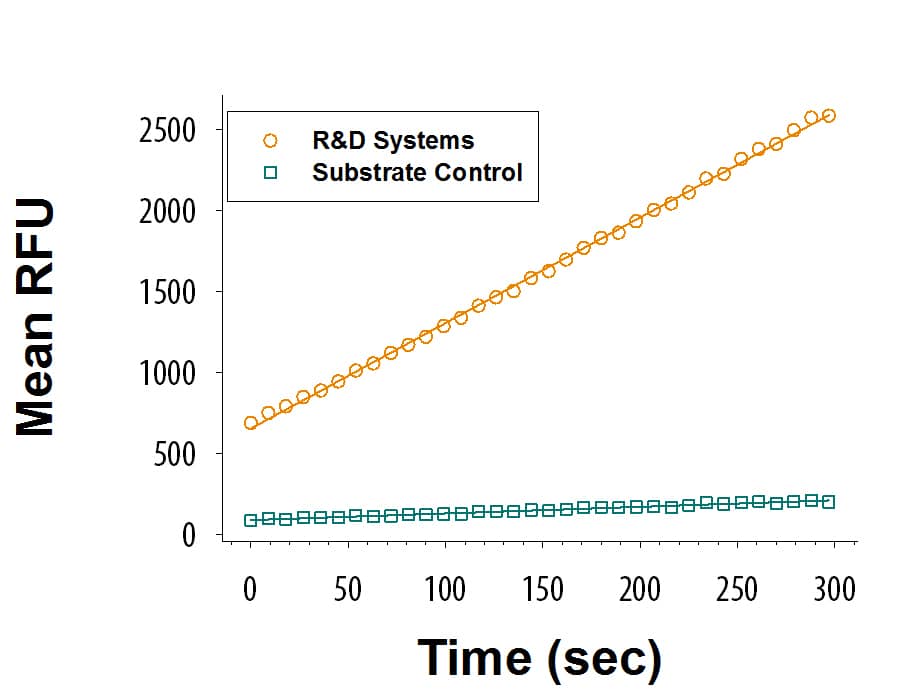Recombinant Human BCAT2 Protein, CF
R&D Systems, part of Bio-Techne | Catalog # 9537-BA

Key Product Details
Product Specifications
Source
E. coli-derived human BCAT2 protein
Ala28-Val392
with an N-terminal Met and 6-His tag
Ala28-Val392
with an N-terminal Met and 6-His tag
Purity
>95%, by SDS-PAGE visualized with Silver Staining and quantitative densitometry by Coomassie® Blue Staining.
Endotoxin Level
<0.10 EU per 1 μg of the protein by the LAL method.
N-terminal Sequence Analysis
Met
Predicted Molecular Mass
42 kDa
SDS-PAGE
37-42 kDa, reducing conditions
Activity
Measured by its ability to convert leucine and alpha-ketoglutarate to alpha-ketoisocaproate and glutamate.
The specific activity is >3,500 pmol/min/μg, as measured under the described conditions.
The specific activity is >3,500 pmol/min/μg, as measured under the described conditions.
Scientific Data Images for Recombinant Human BCAT2 Protein, CF
Recombinant Human BCAT2 Protein Enzyme Activity
Recombinant Human BCAT2 (Catalog # 9537-BA) is measured by its ability to convert leucine and alpha-ketoglutarate to alpha-ketoisocaproate and glutamate.Formulation, Preparation and Storage
9537-BA
| Formulation | Supplied as a 0.2 μm filtered solution in Tris, NaCl, DTT and Glycerol. |
| Shipping | The product is shipped with polar packs. Upon receipt, store it immediately at the temperature recommended below. |
| Stability & Storage | Use a manual defrost freezer and avoid repeated freeze-thaw cycles.
|
Background: BCAT2
References
- Hutson, S. (2001) Prog. Nucleic. Acid Res. Mol. Biol. 70:175.
- Suryawan, A. et al. (1998) Am. J. Clin. Nutr. 68:72.
- Hall, T.R. et al. (1993) J. Biol. Chem. 268:3092.
- Yennawar, N. H. (2006) J. Biol. Chem. 281:39660. (BCATm)
- She, P. et al. (2007) Cell Metab. 6:181.
- El Hindy, M. et al. (2014) Antioxid. Redox Signal 20:2497.
- Ashby, E.L. et al. (2017) Neurochem. Res. 42:306.
- Hull, J. et al. (2015) J. Alzheimers Dis. 45:891.
Long Name
Branched Chain Amino Acid Transaminase 2
Alternate Names
BCAM, BCATM, BCT2, Eca40
Gene Symbol
BCAT2
UniProt
Additional BCAT2 Products
Product Documents for Recombinant Human BCAT2 Protein, CF
Product Specific Notices for Recombinant Human BCAT2 Protein, CF
For research use only
